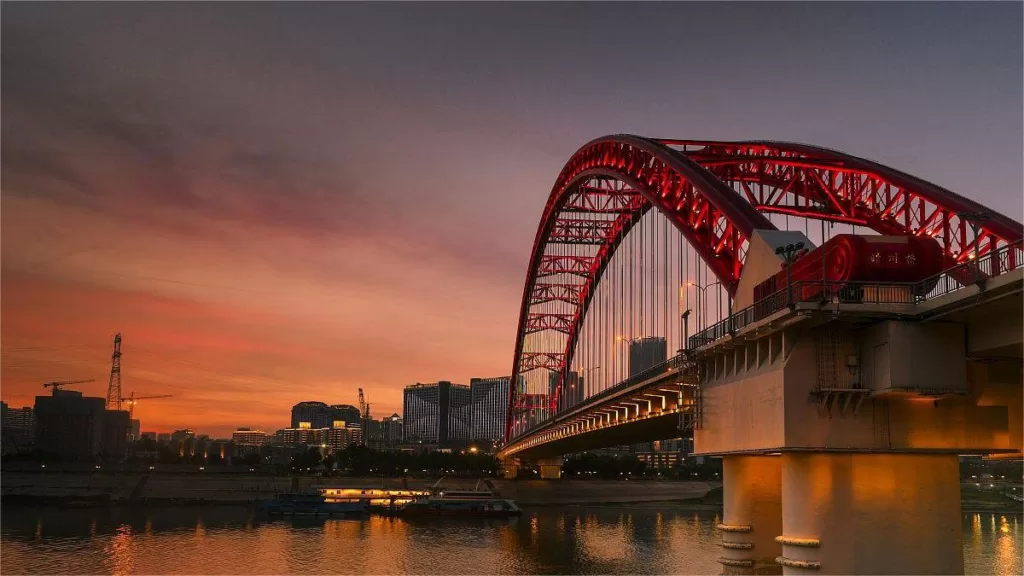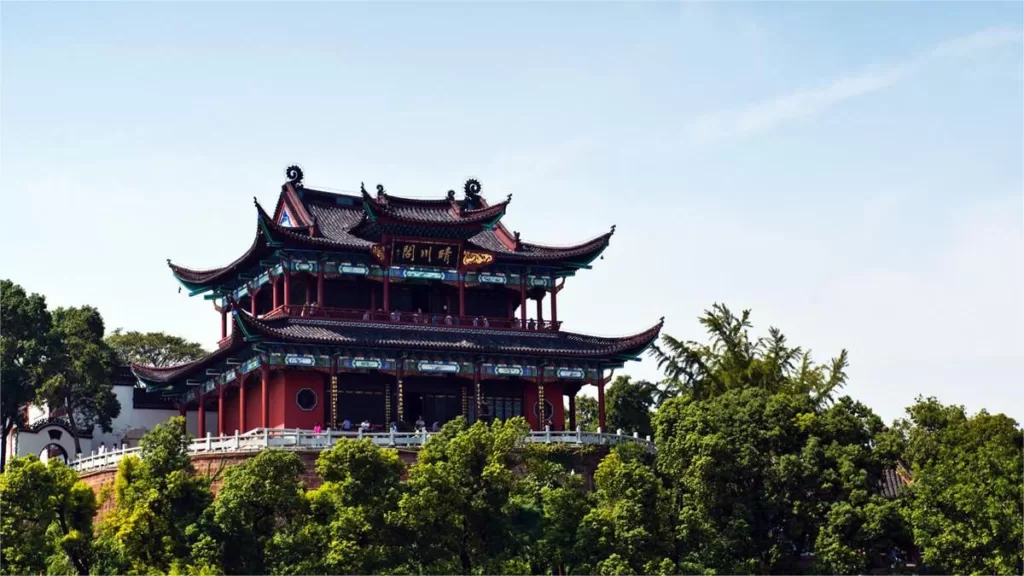Qingchuan-Brücke, Wuhan - Highlights und Lage


Wuhan Qingchuan Bridge (武汉晴川大桥) stands as the fourth urban Hanjiang River highway bridge constructed in Wuhan, Provinz Hubei, China. With a length of 989.75 meters and a main span of 302.93 meters, it is an impressive steel-tube concrete tied-arch bridge crossing the Han River. Connecting to Hankou Riverside Avenue and Hanyang Hannan Road through four ramps on both ends, the bridge is a vital part of the city’s transportation infrastructure.
The architectural marvel of Wuhan Qingchuan Bridge lies in its unique design and engineering prowess. It is the city’s longest-span and technologically sophisticated urban landscape bridge of its kind. The bridge arch, painted in vibrant red, takes on the graceful curve resembling a rainbow across the Han River, earning it the popular moniker of “Rainbow Bridge” or “Caihong Qiao” in Chinese.
Qingchuan Bridge is not just a functional transport link; it’s a piece of art and cultural representation. The arch-shaped railings on the bridge align with its overall curve, while intricate patterns reflecting the local culture of Jingchu are adorned on the bridge. The pedestrian walkways, along with rainbow-themed relief murals on the arch bridge and observation platforms, contribute to the bridge’s aesthetic appeal.
Situated amidst the scenic area of Longwang Temple and the Turtle Mountain on the opposite bank, Qingchuan Bridge has become a prominent part of Wuhan’s emerging tourist landscape. It is recognized as a striking symbol, enhancing the city’s tourism profile. The bridge, together with its associated facilities, has significantly transformed the appearance of the old urban areas such as Hankou, Han Zheng Street, and Liudu Bridge on the southern bank of the Han River.
In addition to its visual allure, the construction of Qingchuan Bridge and its supporting facilities has played a pivotal role in improving the flow of traffic in the commercial districts of Han Zheng Street and Liudu Bridge. Wuhan Qingchuan Bridge stands not only as a functional transport link but also as an iconic structure that weaves together aesthetics, culture, and urban development.
Standort und Transport
Wuhan Qingchuan Bridge is strategically situated between Jijia Mouth in Hankou and the Southern Bank Mouth in Hanyang, adjacent to the confluence of the Han River and the Yangtze River, linking Zhongshan Avenue in Hankou with Tiemen Pass in Hanyang.
To get there, tourists can take bus 30, 531, 532, 535, 553, 559, 561, 711, or 803, get off at Qingchuan Pavilion Stop (晴川阁站), and walk about 750 meters to the north.
Vlog about Qingchuan Bridge
Attractions near Qingchuan Bridge

Iron Gate Pass - Ein strategischer Pass vor über 2000 Jahren

Qingchuan-Pavillon - einer der drei großen Aussichtspunkte von Wuhan

Wuhan Zoo - Reiche Flora und Fauna

Zhang Zhidong und das Museum für moderne Industrie

Dayu Mythological Park - Geschichten und Legenden rund um Dayu

Guiyuan-Tempel - Zweigesichtige Guanyin-Statue

Guishan Park - das geografische Herz von Wuhan

Hanzheng Street - Erschwingliche Kleinwaren

Wuhan Chinese Strange Stone Museum - Ein Zeugnis der geologischen Wunder der Erde

Guqin-Terrasse - Lengend von Boya und Ziqi

Wuhan Qintai Grand Theater - ein kulturelles Zentrum
Lokales Leben in Hubei, Wuhan Attraktionen